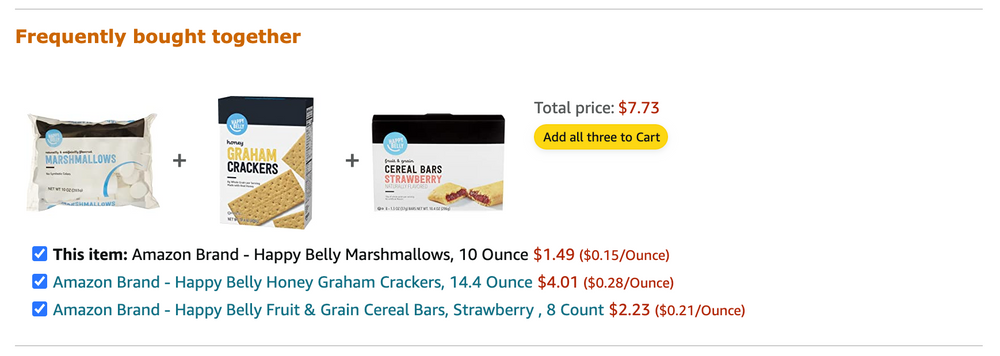By Melissa Wightman, The Mars Agency
The following article is the second in a three-part series examining “Game-Changing Ecommerce Partnerships.” The first article examined “The Ecommerce Partnership Advantage.”

Now that we understand the many benefits of executing an ecommerce partnership, it’s time to discuss best-practice strategies for securing the most important component of any partnership program: the right partner.
What’s the best way to go about determining the right partner? The Mars Agency uses several approaches that have proved to be successful. But before we examine those, let’s explore some possible goals of a partnership marketing program — which, in my opinion, are what make the strategy as fun as it is effective.
What can the win really look like? Here are some ideas:
- Leverage your brand’s national program for a unique, relevant activation at retail.
- Create differentiation for your brand and your retailer partner through a custom program.
- Experiment with a new usage occasion to see if it makes sense for long-term opportunities
- Increase usage and maybe even purchase frequency during those white spaces in the calendar.
- Creating a new shopper solution utilizing the unique qualities of the partnering brands.
- Gaining insights from a new audience. One great benefit of working with Amazon in particular is the first-party data that you can access. You can use that to learn what may resonate with one audience versus another.
- Testing various messaging and communications with current and new buyers to see what works best with each.
- Or just being super-tactical to drive more traffic to your Brand Store, which can earn you followers for future opportunities or an audience pool for retargeting campaigns.
Once you’ve determined the goal, the next step is to identify the very clear objective you’ll use to measure success. It might be reaching new buyers, driving frequency, trading shoppers up to a larger pack size, or building basket for your brand’s portfolio during a key season.

One important piece of advice here: We often all get caught up in the idea of using Return on Ad Spend (ROAS) as the gold standard of measurement, but it isn’t a one-size-fits-all metric. You need to adjust your ROAS assessment to make it a suitable KPI for the specific objective you’ve set — if, for instance, your objective is new buyers, you’ll want to evaluate the new to brand purchase rate, not just your campaign ROAS.
After you’ve set your objectives and KPIs, you can start investigating possible programs and partners. Start by exploring all of your brand’s owned assets and information tools:
1. Look at your brand’s national activity. Are there any existing partnerships that can be leveraged for retail activation?
2. Read your ratings and reviews. This is an underrated way to glean what essentially are free insights about your brand. Take the time to comb through your reviews — both positive and negative. If they’re using your product to make a sandwich, as an example, what other ingredients are they adding?
3. Look at your Product Detail Pages to see what other items are being “Frequently Bought Together” with yours.

4. Similarly, go behind the scenes to leverage Amazon Vendor Central’s market basket tools, which often highlight the top three brands and ASINs (Amazon Standard Identification Numbers) that are purchased with your products.
5. Tap into keyword performance tools like the ones provided by Analytic Index (see example below), which can help you understand how shoppers are converting off different keywords and how that might change seasonally.

6. And then, of course, don’t forget about your standard brand recipes or pairings. Tried and true partnerships can work well, too.
7. Work with your insights team internally or at your agency partner to uncover unique shopper or consumer behaviors that can inform a partnership.
But don’t stop with your own assets. There is a vast marketplace of people out there across social media and the influencer community that might provide ideas organically in their discussions.
Finally, don’t forget to tap into the people you know personally. Host ad hoc meetings or happy hour brainstorms to collect the thoughts of your team. Conduct an informal “shopper survey” with friends, family and colleagues. Visit a few stores to see how and where your products are being merchandised relative to other products.
Any of these resources could deliver the information and inspiration you need to develop a unique, effective partnership.
But remember to proceed with caution before choosing a specific partner for the program.
Here are some watchouts:

When you think about how the program might be delivered to your shoppers, consider if your price points are complementary. If you’re using ROAS as a benchmark, will the program pay out evenly for both brands?
Consider price from the shopper POV, too: Will the final overall price on the combined purchase deliver value, or will it be too costly if you’re not running a deal or reward offer?
Consider pack styles. If you’re trying to reach new shoppers, will the pack size seem overwhelming to someone who hasn’t purchased before?
Here is one of my biggest learnings when creating partnership programs for Amazon: If you’re an Amazon Seller, partnering with another Seller is the better way to go rather than working with an Amazon Vendor. We have successfully run partnerships between Seller and a Vendor in the past, but there are additional hurdles and logistics issues to solve that can slow down timelines.
Finally, to make sure all the hard work that you’ll be doing pays off, run the program for a long enough period of time to gain some insights, optimize the activation based on what you learn, and then gain additional learnings from those optimizations.
Now that we’ve outlined effective strategies for picking the right partner, we’ll offer tips on best-in-class activation next.
____________

About the Author
Melissa Wightman is VP-Ecommerce at The Mars Agency. An industry veteran with over 25 years of shopper marketing experience, she has worked closely with multiple CPG clients in the food and healthcare industries.
Over the last 9 years, Wightman has helped build the agency’s growing ecommerce practice, and now works with her team of content, creative and media experts to deliver innovative solutions that drive growth for clients.



